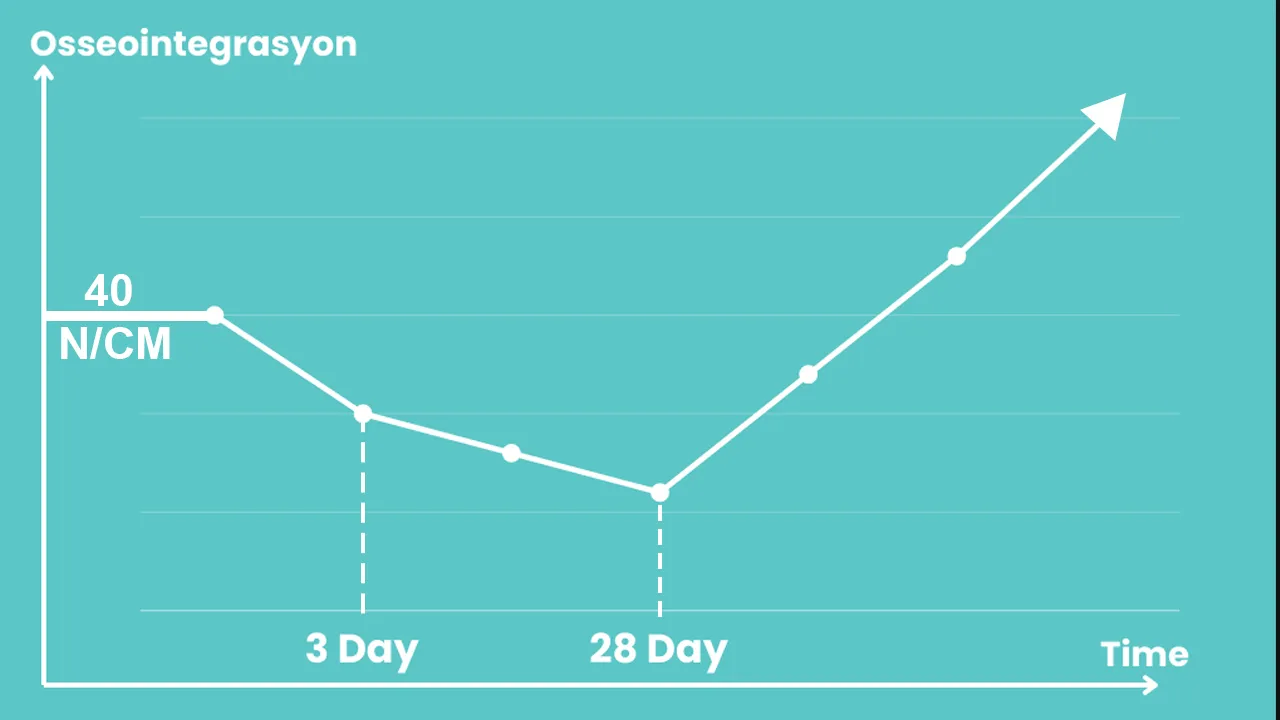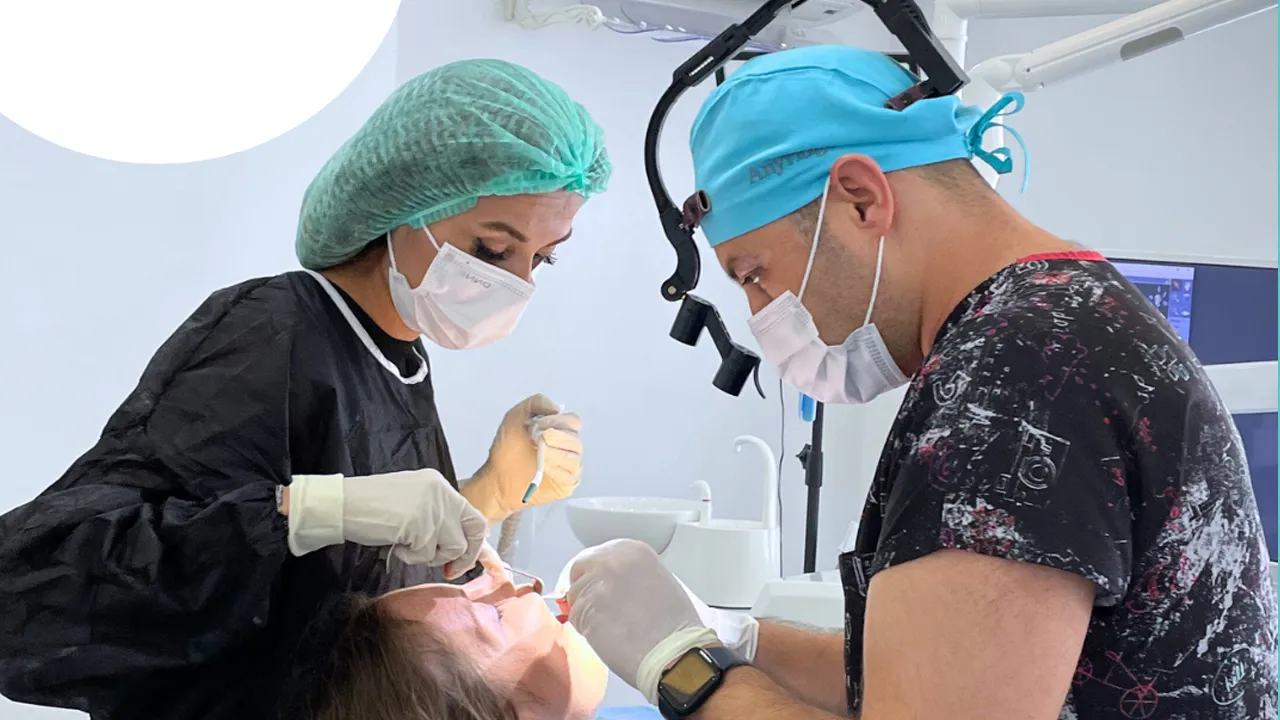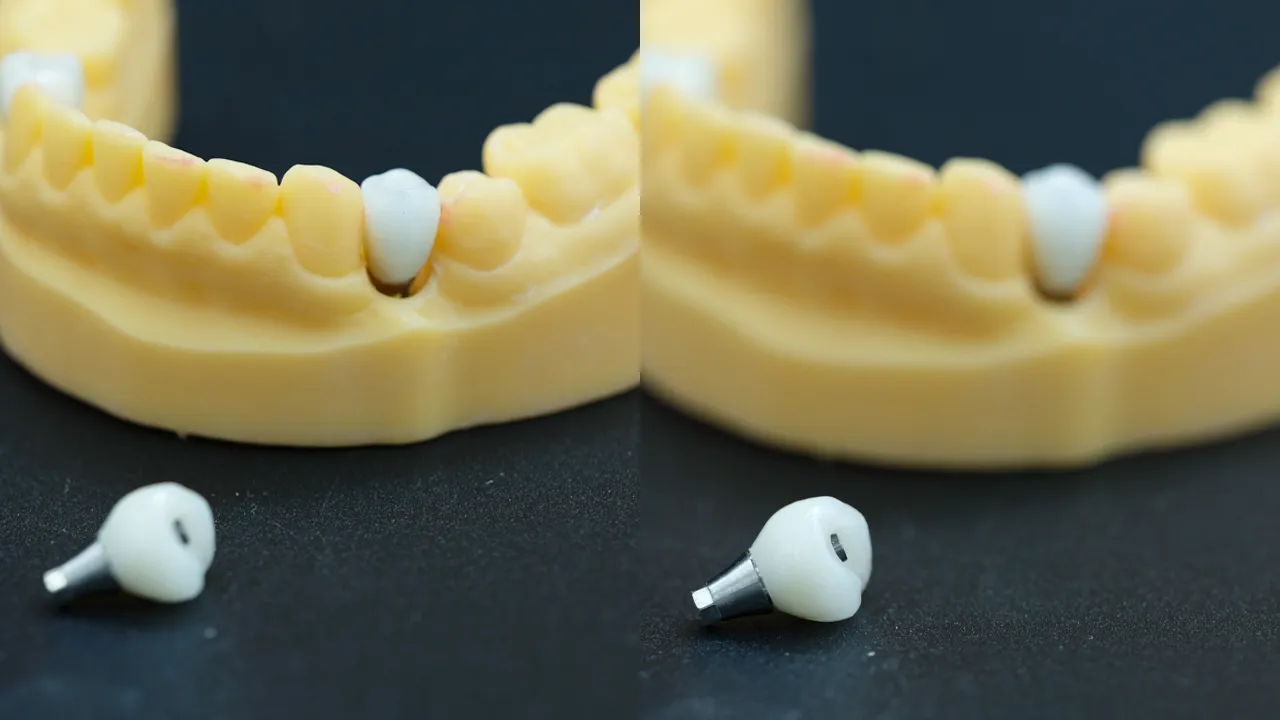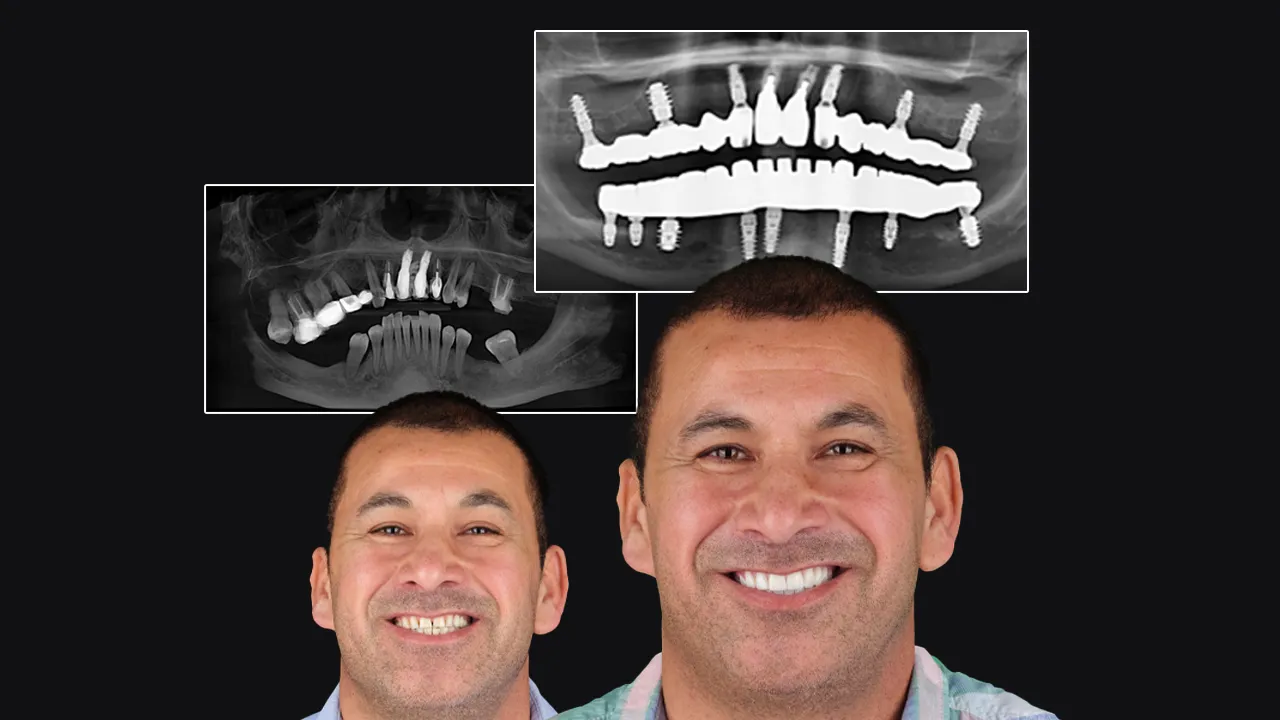Taking on the journey of getting dental implants abroad constitutes a major choice that requires careful consideration and informed choices. Dental implants have revolutionised methods for replacing teeth, offering natural-looking and durable solutions. Prospective patients need to have a clear grasp of important facts before beginning the dental implant process. The article lists 13 important things one must know before getting dental implants abroad. The facts give people the information they need to make smart choices, ensuring a successful and satisfying tooth implant experience, covering everything from the materials used in implants to long-term care and maintenance. The article offers a comprehensive overview of dental implants, covering topics such as types, costs, and risks that empower individuals to navigate the process confidently.
The 13 essential facts to know before getting dental implants abroad are listed below.
- Implant Materials: Understand the components employed in dental implants, such as titanium or zirconia, and their implications for the tooth implant procedure.
- Healing and Integration Time for Dental Implant: Learn about the necessary duration for healing and integration after the dental implant procedure, ensuring a successful outcome.
- Dentist's Qualifications for Dental Implants: Evaluate the qualifications and expertise of the dentist performing the tooth implant to ensure a skilled professional is managing the procedure.
- Procedure Steps for Dental Implant: Familiarise oneself with the step-by-step process involved in the dental implant procedure, from initial consultation to the final placement.
- Abutment Installation for Dental Implant: Gain insights into the installation of abutments, crucial components that connect the dental implant to the artificial tooth or crown.
- Post-Surgery Recovery for Dental Implant: Understand the post-surgery recovery phase, including care practices and guidelines to facilitate optimal healing after the dental implant procedure.
- Implant Types: Explore the different types of dental implants available, considering factors such as endosteal and subperiosteal implants.
- Implants are Natural Looking: Recognise the natural-looking results achieved through dental implants, contributing to seamless integration with existing teeth.
- Cost Considerations: Consider the financial aspects of dental implants, including the cost and potential factors influencing the expense of the tooth implant procedure.
- Popular Destinations: Explore popular destinations for dental implant procedures abroad, considering factors such as cost, expertise, and travel convenience.
- Potential Risks: Be aware of potential risks associated with dental implants, such as infection, inadequate ossification, or nerve damage, to make informed decisions.
- Research and Planning: Emphasise the importance of thorough research and planning, including choosing reputable clinics and understanding the intricacies of the dental implant procedure.
- Long-Term Care and Maintenance: Recognise the significance of continual upkeep and maintenance for dental implants, guaranteeing sustained oral health post-procedure.
1. Implant Materials
Choosing the right materials for dental implants in abroad is a critical step in guaranteeing the patient's success, durability, and satisfaction. The preference for titanium as the material of choice is well-founded, given its anti-corrosion features, compatibility with the human body, and close resemblance to bone tissue. The choice contributes significantly to the durability of the implant and its seamless integration with the patient's natural bone.
Titanium implants rely heavily on additive alloys such as zirconium and iridium to increase their strength and rigidity. Iridium increases stiffness, while zirconium improves force tolerance and tissue harmony. The alloys are vital in ensuring that the natural bone and titanium implants become a unified and solid structure over time.
The diversity of materials available for crowns, including zirconia, porcelain, Emax, and others, provides aesthetically pleasing and durable options. Its variety allows for customisation based on the patient's wants and unique requirements, contributing to the overall success of the implant procedure.
Extensive consideration of materials at each stage enhances the entire dental implant process in abroad. It ensures the implants' longevity, efficiency, and safety. Neglecting the stage or opting for suboptimal materials worsens the procedure. Complications arise, such as implant failure, poor osseointegration, and aesthetic issues that lead to additional procedures, costs, and patient discomfort.
Skipping specific stages, such as choosing titanium implant and zirconium implant or neglecting the selection of crown materials, results in potential problems. Improper implant material selection leads to complications such as allergic reactions or hindered osseointegration. Choosing the wrong crown material compromises the implant's aesthetics and leads to dissatisfaction on the part of the patient.
Thorough analysis and informed decision-making regarding dental implant materials are paramount. The process directly influences the completion and outcome of dental implants in abroad, emphasising the importance of giving patients comprehensive information to facilitate well-informed choices.
2. Healing and Integration Time for Dental Implant
The healing and integration time for the dental implant in abroad is 4-6 months. The process involves a comprehensive consultation and exam. The next phase is pivotal as it encompasses a thorough examination, a review of the patient's health history, and X-rays to gauge bone measurements. Information regarding the patient's unique anatomy and bone condition and vital insights into the patient's general health must be provided. It sets the foundation for informed decision-making regarding treatment options and establishes a baseline understanding for the dental team and the patient.
The pre-operative appointment is crucial in preparing the patient for the operation. The step includes taking impressions of the jaw and teeth, ensuring readiness for post-surgical care, and advising the patient to follow a soft diet after surgery. The informative aspect for the patient lies in understanding the importance of these preparatory measures, creating a sense of readiness for the surgical intervention, and contributing to a smoother recovery period.
The critical implant surgery appointment comes next, where the implant fixture is surgically placed. The phase involves bone grafting, setting the stage for successful implant integration. The patient gains insights into the surgical process, potential requirements for bone grafts, and the expected 4-6 month integration period. Regular follow-up and subsequent uncover appointments are integral to monitoring healing progress and revealing the implant in abroad after the designated healing period. The steps keep the patient informed about their healing status and guide them through the successive stages of the process.
The impression, abutment, and crown placement appointments are the last ones before the procedure is complete. Impressions are taken for the final tooth, and the abutment and crown are placed after integration. It represents the last step for the patient, who has previously made decisions about tooth colour and bite recording. Each of these steps contributes significantly to the success of the dental implant procedure, and patient adherence to the recommended timeline is paramount for a positive and lasting outcome. Any deviation or skipping of these stages results in complications, emphasising the importance of a comprehensive and well-paced method for dental implant treatment.

3. Dentist's Qualifications for Dental Implants
The process of evaluating a dentist's qualifications for dental implants in abroad is paramount for ensuring the success and safety of the procedure. A patient's understanding of their dentist's qualifications plays a pivotal role in the success of dental implant procedures in abroad. Proper qualifications enhance the process, instilling confidence in the patient and contributing to positive outcomes. Overlooking or dismissing the importance of these qualifications results in compromised safety, increased procedural risks, and potential complications.
The attainment of a Doctor of Dental Surgery (DDS) degree from an accredited dental school is fundamental. Their academic background establishes the foundational knowledge required for dental professionals. It assures the patient that their dentist has undergone comprehensive education in the general field of dentistry.
Given the specialised nature of implantology, additional training becomes imperative. Implant dentists, such as Dr. Delwyn Dick and Dr. Lamont Murdoch, with over 25 years of experience, emphasise the significance of continuous education and advanced training. Their additional training encompasses various aspects of implant dentistry, including procedures such as augmentation of the jaw bone, sinus lifts, and other advanced techniques. The patient is informed that their dentist has pursued formal education and dedicated themselves to acquiring specialised skills and staying current with the latest techniques and technology.
The existence of these qualifications profoundly impacts the procedure. Enhancements are realised in terms of procedural precision, a comprehensive understanding of advanced techniques, and the ability to adapt to evolving technologies. Patients benefit from the confidence that their dentist possesses the necessary expertise to successfully navigate the complexities of implant dentistry.
A lack of these qualifications compromises the procedure. There is a higher chance of treatment mistakes, insufficient knowledge of complex procedures, and diminished patient safety if a dentist does not have the necessary DDS degree or specialised training. The absence of proper qualifications leads to suboptimal outcomes and potential complications.
Skipping the crucial stage of evaluating the dentist's qualifications introduces significant problems. Patients unknowingly choose a practitioner without the necessary expertise, leading to heightened dangers while having an implant in abroad. Complications, ranging from surgical errors to post-operative issues, become more probable when the dentist lacks the necessary skills.

4. Procedure Steps for Dental Implant
The procedure steps for dental implants in abroad involve the removal of the damaged tooth. The step is pivotal, eliminating existing issues and providing a clean foundation for the subsequent implant. Patients are thoroughly informed about the necessity of the tooth's removal, setting the stage for a comprehensive understanding of the procedure. Failure to execute it compromises the implant's stability, introducing potential complications during the subsequent phases.
Jawbone preparation is the next crucial step after tooth extraction, particularly in cases where grafting is recommended. The process aims to address any bone-related issues and ensure a robust foundation for the implant. Patients are educated about the potential need for grafting and its integral role in strengthening the jawbone. Skipping the stage results in inadequate bone support, placing the implant's stability at risk and increasing the chance of failure.
The dental implant procedure's central phase is the implant's surgical placement. It's key for establishing stability and facilitating the integration of the implant. Patients receive comprehensive information about the surgical intricacies involved in implant placement in abroad. Omitting the stage negates the fundamental purpose of the implant, leading to instability and potential failure.
The process moves on to bone growth and healing after the implant is put in. It is when osseointegration happens. The step is critical for providing a stable base and allowing the jawbone to grow around the implant. Patients gain an understanding of the healing process and the time required for successful osseointegration. Deviating from the prescribed timeline for the stage compromises the implant's stability, increasing the risk of failure.
The placement of the abutment follows successful osseointegration. The abutment connects the implant to the artificial tooth, which is crucial in supporting the final prosthesis. Patients are apprised of the significance of the abutment in the structure. Skipping or improperly executing it disrupts the attachment of the artificial tooth, leading to complications in the final stage.
The culmination of the dental implant procedure involves the placement of the artificial tooth, a crown. It is the final step that serves to restore functionality and aesthetics. Patients are informed about the completion of the implant process and the final tooth's placement. Omitting it leaves an unfinished process, depriving the patient of the full benefits of a restored tooth.
5. Abutment Installation for Dental Implant
The abutment installation in the dental implant method guarantees the success of the process. It consists of inserting metal into the dental implant and steadily holding the crown or artificial tooth in place. Patients are provided with comprehensive information about the significance of the abutment installation, as it determines the function and firmness of the final dental restoration.
The informative nature of it lies in the patient's understanding of the role of the abutment as a link between the implant and the prosthetic tooth. Patients learn about the materials used for abutments, which include titanium, gold, stainless steel, zirconia, or polyether ether ketone. The knowledge empowers patients to comprehend the components involved in caring for their teeth and aids in making wise choices regarding their oral health.
The fact that an abutment is a necessary connector in the implant process enhances the procedure by ensuring a secure and stable foundation for the artificial tooth. The abutment, made in a dental lab, is customised to fit the patient's specific case. Its presence contributes to the long-term success of the dental implant by providing a reliable connection between the implant and the visible tooth. A lack of stability in the procedure compromises the efficacy and longevity of the dental restoration if the abutment is not applied.
Skipping the step of installing the abutment has a devastating effect on the dental implant process in abroad and increases the likelihood of problems and complications. The abutment serves as the intermediary component that facilitates the link of the crown to the implant. Skipping it results in the inadequacy of the implant-prosthesis connection, causing instability and potential dislodgment of the artificial tooth. The absence of the abutment hinders the proper alignment and fitting of the crown, affecting the appearance and function of the dental restoration.
Installing the abutment is vital to the dental implant process because it gives the final restoration stability, functionality, and good looks. Patient understanding of it is vital for informed decision-making, and the right execution of abutment placement is integral to accomplishing the dental implant. Omitting or neglecting it leads to complications, jeopardising the performance and the restoration's life span.

6. Post-Surgery Recovery for Dental Implant
Post-surgery recovery for dental implants involves a series of crucial steps, each of which holds paramount importance for the patient's well-being and the ultimate success of the implant procedure in abroad. The informative nature of these stages is vital for patients to comprehend the care required for a smooth recovery process. These facts enhance the procedure by promoting proper healing and minimising the risk of complications. Skipping or neglecting any specific stage worsens the procedure, potentially leading to complications and compromising the success of the dental implant in abroad.
The protection of the blood clot and surgical site is imperative. Patients are educated about the normalcy of bleeding after implant placement and guided to apply gentle pressure with cool packs. Such information enhances the procedure by ensuring the preservation of the blood clot, promoting healing, and preventing complications such as excessive bleeding.
Skipping the stage of protecting the blood clot and surgical site worsens the procedure by increasing the risk of complications such as prolonged bleeding and delayed healing. Potential problems include the dislodgment of the blood clot, which leads to compromised healing and an increased likelihood of infection. Follow these guidelines to ensure the success of the dental implant is maintained.
Rinsing is carefully explained to patients, emphasising the need to avoid disrupting the healing process. Patients are provided with a detailed schedule for rinsing, starting with restrictions on the day of surgery and gradually progressing to more vigorous rinsing over several weeks. The information ensures that patients understand the importance of maintaining oral hygiene while respecting the delicate healing environment.
Care of teeth and managing swelling, fever, bruising, and pain are integral to recovery. Patients are informed about dietary restrictions, the avoidance of smoking and alcohol, and measures to address potential complications. Skipping or neglecting any of these steps leads to adverse effects such as infection, prolonged discomfort, or impaired healing.
The provided post-operative instructions, including guidelines for continuing care after implant stages 1 or 2, contribute to patients' comprehensive understanding of the importance of daily, weekly, and yearly maintenance. It emphasises the foreign body nature of implants and the necessity for ongoing care to ensure long-term success and survivability. Patients are educated on the critical role of good oral hygiene, specific dental tools, and the importance of regular dental check-ups for implant maintenance.
7. Implant Types
A thorough understanding of implant types is vital for several reasons, including customising treatment plans, taking anatomical variations into account, respecting patient preferences, maximising aesthetic and functional outcomes, managing expectations, and preventing complications. It is a knowledge-driven approach that enhances the success and satisfaction of the dental implant procedure in abroad.
Endosteal implants, which resemble screws, play a crucial role in securing objects within the jaw to support dentures. The importance of each step in the process lies in ensuring the fusion of the implant with a healthy jawbone, establishing a stable foundation for artificial teeth. It is essential to inform patients about it, guiding them through eligibility criteria and the subsequent healing process, enhancing overall comprehension.
The successful integration of endosteal implants enhances the stability of the procedure. It provides a solid foundation for attaching artificial teeth, contributing to the aesthetic and functional success of the implant. Skipping it compromises implant stability, leading to potential issues with artificial tooth attachment, implant failure, and the need for corrective measures.
Skipping the endosteal implant results in instability and hinders the fusion with the jawbone. Potential problems include a higher risk of implant failure, inadequate support for artificial teeth, and the need for corrective interventions. Patient education is crucial to ensure adherence and minimise potential complications.
Subperiosteal implants, placed outside the jawbone and beneath the gums, offer an alternative for patients with insufficient jawbone or who are resistant to major oral surgery. Informing patients about their options is vital for people not eligible for endosteal implants, enhancing their understanding of implant choices.
The inclusion of subperiosteal implants provides an alternative solution tailored to specific patient needs. The step contributes to a comprehensive approach, addressing challenges related to jawbone insufficiency. Skipping it limits options, potentially resulting in dissatisfaction with the implant type and the need for revision surgeries.
Lack of consideration for subperiosteal implants leads to suboptimal outcomes as patients do not explore alternatives suitable for their conditions. Potential problems include dissatisfaction with the chosen implant type, compromised stability, and the need for additional interventions.
Zygoma implants, inserted into the cheekbone instead of the jawbone, represent a specialised approach for specific anatomical considerations. Informing patients about such implant types is crucial for people looking for comprehensive knowledge of available options, enhancing their awareness of alternatives.
Zygoma implants provide an alternative solution for patients with unique anatomical challenges. The step contributes to a tailored approach, addressing specific concerns related to jawbone anatomy. Skipping it results in uninformed decision-making, potentially impacting patient satisfaction and procedural success.
Patients miss out on a good option for certain anatomical issues if information about zygoma implants in abroad is not included. Potential problems include uninformed decision-making, suboptimal treatment choices, and a higher likelihood of dissatisfaction. Ensuring patients are aware of such alternatives is crucial to avoid potential issues and enhance the success of the implant procedure. Exploring the various types of dental implants is crucial for understanding the diverse options available in modern implant dentistry.
8. Implants are Natural Looking
The process of getting dental implants in abroad comprises several steps to ensure that the implants look natural and fit into the patient's mouth perfectly. The natural appearance of dental implants depends on a combination of factors, including consideration of facial structure, appropriate material for the crown, precise colour matching, and the correct attachment method. Patients must know the importance of choosing the right implant for a successful and natural-looking tooth implant procedure.
Missing teeth cause jawbone degeneration and affect facial muscles, leading to changes in facial structure. A dental implant aids in keeping facial structure and prevents a sunken appearance. Ignoring the impact of missing teeth on facial structure results in a less natural look after the implant procedure.
The material used for the crown is crucial for a natural appearance. Porcelain or ceramic crowns closely mimic the look of natural teeth. Choosing an inappropriate material results in a less natural appearance, affecting the success of the implant in blending with the surrounding teeth.
Matching the colour of the crown to the natural teeth is essential for seamless integration. Skipping it leads to a noticeable difference in tooth colour, making the implant stand out and compromising the smile's aesthetics.
The method used to secure the crown, whether cement or a screw, impacts the stability and appearance of the implant in abroad. Choosing an inappropriate attachment method affects the long-term success of the implant and its ability to blend in naturally with the adjacent teeth.
Dental implants prevent jawbone degeneration and maintain facial form. Porcelain or ceramic crowns closely resemble natural teeth. Colour-matching ensures the implant blends well with the existing teeth.

9. Cost Considerations
Being aware of the cost considerations of dental implant in abroad procedures is crucial for patients, providing transparency and allowing wise budgeting. The importance of cost considerations lies in helping people to make informed decisions aligned with their financial capabilities. Factors such as the number of implants, case complexity, and materials used significantly impact the cost, making it essential for patients to be well-informed about these aspects.
The impact of clear cost communication enhances the procedure by fostering realistic expectations. Informed patients are more likely to follow the recommended treatment plan, resulting in better cooperation and a smoother process. A lack of awareness regarding costs leads to surprises, causing stress and potential dissatisfaction. The lack of clarity negatively affects the dentist-patient relationship and, subsequently, the procedure's success.
Comparing prices, seeking promotions, considering dental tourism, and exploring financing options empower patients to make informed choices that align with their budget while ensuring the quality and success of the dental implant procedure in abroad.
Skipping the stage of addressing cost considerations has positive and negative effects. Enhancing patient satisfaction and trust is achievable if the discussion on costs is thorough, ensuring alignment between expectations and financial commitments. Skipping it leads to misunderstandings, potentially causing delays or interruptions in the treatment. The lack of preparation worsens patient anxiety and dissatisfaction, impacting the success of the dental implant procedure in abroad.
The cost of dental implant issues must be considered for procedures to go well. Educating patients about realistic expectations and helping them understand makes the experience smoother and more satisfying. Skipping it leads to misunderstandings, financial stress, and potential disruptions, negatively impacting the procedure's success and the patient's satisfaction.
10. Popular Destinations
Understanding the influence of geographic location before deciding on dental implant procedures is crucial for patients. The location of the procedure holds significance because it directly impacts the expenses associated with dental care. Information is a key factor for patients in making informed decisions about their treatment plan and budgeting considerations.
Knowing the cost disparities in different regions helps patients set realistic expectations and plan their finances accordingly. Being aware that urban areas have higher dental care costs than rural areas allows patients to anticipate potential variations in expenses. The information empowers patients to choose a destination that aligns with their budget while maintaining the desired quality of dental care.
The existence of geographical cost variations enhances and worsens the dental implant procedure in abroad. One good thing about picking a place with lower dental care costs is that it improves the process by making it easier for more people to afford. It lessens financial stress, which promotes better cooperation and satisfaction during treatment.
Patients who do not know about these differences in cost have a chance to choose a location where dental care costs more, which makes the whole process worse. Financial strain and unexpected costs lead to dissatisfaction and, in extreme cases, impact the patient's ability to complete the treatment plan. Its lack of awareness strains the dentist-patient relationship and compromises the success of the dental implant procedure.
Skipping the stage of considering the geographic location and its impact on dental care costs introduces potential problems in the dental implant procedure. Patients make decisions without considering how their chosen location affects their finances if they do not realise how important regional cost differences are.
Choosing a location with higher dental care costs results in unexpected financial strain for the patient. The strain affects the ability to afford the entire procedure, potentially leading to incomplete treatments or delays. They become dissatisfied if higher-than-expected costs catch patients off guard. The dissatisfaction impacts their experience and cooperation throughout the treatment. Financial challenges force patients to interrupt or postpone their treatment plan, affecting the success of the dental implant procedure. Consistency and adherence to the recommended plan are vital for optimal results.
Acknowledging the importance of geographic location and its influence on dental care costs is informative for patients. It helps them make informed decisions, avoid financial surprises, and ensure a smoother and more satisfactory dental implant procedure in abroad. Skipping the consideration leads to financial challenges and potential disruptions in the treatment plan, impacting the patient's experience and the procedure's success.

11. Potential Risks
Patients considering dental implant surgery must understand the potential risks. Dental implant surgery is a significant and serious undertaking involving multiple steps and commitment plan information about potential risks, giving patients a realistic perspective on the challenges that arise during and after the procedure.
The information serves as a crucial tool for informed decision-making. Patients need to be aware that dental implant surgery carries inherent risks, as with any surgical procedure. Being well-informed empowers patients to weigh the benefits against the potential risks, fostering a sense of responsibility and preparedness for the journey ahead. It establishes realistic expectations, ensuring patients are mentally and emotionally ready for the challenges.
The existence of potential risks in dental implant surgery enhances and potentially worsens the procedure, depending on how patients approach the information. Being alert to dangers allows for better decision-making and preventative actions, which improves the procedure.
Informed patients are better equipped to make decisions aligned with their health circumstances and priorities. Knowledge about potential risks allows for proactive measures to mitigate these risks, reducing the likelihood of complications during and after the procedure.
One potential drawback is that patients make things worse if they are overly anxious or underestimate the procedure's risks. Ignoring or neglecting these risks leads to dissatisfaction, complications, and negative outcomes. Lack of awareness about potential risks contributes to heightened anxiety and stress during the procedure.
Skipping the stage of understanding and acknowledging the potential risks of dental implant surgery introduces several problems that affect the procedure. Patients have the right to make informed decisions about their healthcare. Skipping the stage of informing patients about potential risks leads to issues related to informed consent.
Patients unaware of potential risks make decisions without a full understanding of the challenges. Compromised decision-making impacts the treatment plan, potentially leading to suboptimal outcomes.
The importance of understanding potential risks in dental implant surgery is unquestionable. Patients are able to make educated decisions and practice proactive risk management with the help of the information. The existence of these risks enhances the procedure when patients actively engage with information, but it worsens if risks are underestimated or ignored. Skipping crucial stages leads to issues related to informed consent, complications that catch patients unprepared, and compromised decision-making, potentially impacting the success of the dental implant procedure.
12. Research and Planning
Prospective patients must familiarise themselves with the steps involved in the research and planning process that precede dental implant consideration in abroad. The meticulous nature of merging a patient's organic tissue with a dental implant underscores the need for a comprehensive and well-thought-out plan. The information gleaned from research and planning is an invaluable guide for the patient and the dental practitioner.
The significance of it rests in its ability to improve the process and, on the other hand, in the danger of worsening results if disregarded. A well-informed patient, armed with insights from research and planning, actively participates in decision-making, contributing to the success of the implant procedure. Skipping or underestimating it leads to a compromised treatment plan, resulting in suboptimal outcomes.
Thorough research equips individuals considering dental implants with a wealth of information, empowering them to make well-informed decisions regarding their oral health. Understanding the complexities of the workflow, from planning to recovery, empowers patients to actively engage in their treatment journey. Such knowledge enhances the procedure by ensuring patients are well-prepared and aware of the critical aspects of successful implantation.
Ignoring the research and planning phase harms the procedure. Complications arise due to insufficient consideration of factors such as periodontal health, keratinised tissue, and the precise placement of implants. The potential problems include an increased risk of infection, inadequate healing, and dissatisfaction with aesthetic outcomes. Skipping it compromises the precision and success of the implant procedure in abroad, leading to avoidable challenges.
The detailed insights provided by the expert emphasise the importance of meticulous planning in implant procedures. Factors such as assessing periodontal health, ensuring adequate tissue, and considering the spacing between implants and adjacent teeth are critical in avoiding potential complications. The expert highlights the role of digital workflows in enhancing precision, accuracy, and predictability in implant planning. Digital tools, such as high-quality dental scanners and cone-beam computed tomography (CBCT) scans, are instrumental in achieving optimal results.
Research and planning are indispensable stages for individuals considering dental implants. Patients make an informed decision and aid in the procedure's success with the help of the information, which is very helpful. Such information enhances the procedure by ensuring a well-prepared and informed patient. Problems and complications arise if the step is skipped or neglected, impacting the implant procedure's accuracy and success.
13. Long-Term Care and Maintenance
Long-term care and maintenance of dental implants are critical considerations for people considering them, providing valuable knowledge to ensure the enduring implant's ability to function. Patient education on the importance of dental implant maintenance allows them to make educated choices regarding oral health, increasing the implants' longevity and condition.
The fact that dental implants require continuous care enhances the procedure by promoting sustained durability, optimal functioning, and the health of surrounding tissues. Regular check-ups, professional assessments, and preventive measures contribute to the long-term success of dental implants. Neglecting it worsens the procedure, as improper care leads to bacterial growth, complications, and a decline in the implants' stability.
Skipping a specific stage of dental implant maintenance in abroad results in potential problems and complications that jeopardise the procedure's success. The gums and bones around the implants are more likely to get infections if not checked often. The absence of professional cleaning and assessments leads to the buildup of plaque and tartar, compromising the attractiveness and health of the implants. Inadequate home care, including brushing and flossing, further contributes to issues, impacting how long dental implants last.
Long-term care and maintenance are indispensable for individuals deciding to undergo dental implants. The information is highly informative, offering a comprehensive perspective on the ongoing steps necessary to preserve implant-supported teeth' durability, functionality, and wellness. The existence of facts enhances the procedure by promoting sustained success while neglecting the crucial phase, which leads to setbacks and jeopardises the implants' durability over time.
What Is Tooth Implant?
A dental implant is a sophisticated medical device surgically embedded in the jaw to address issues related to chewing or how it looks. Dental implants act as substitute tooth roots, unlike traditional dental procedures comparable to bridges or dentures, providing a stable foundation for various tooth replacements, including crowns, bridges, and dentures.
The absence of a tooth leads to complications such as bone resorption, where the jawbone loses density without the tooth's root stimulation, potentially altering facial structure over time. Dental implants function as fake tooth roots, preventing bone loss by integrating with the jawbone. Constructed from biocompatible materials such as titanium, the dental implant body is securely anchored into the jawbone, offering stability and preventing shifting or movement.
The primary purpose of dental implants is to address the challenges associated with missing teeth. Tooth loss, whether due to disease, accidents, or dental extraction, adversely affects overall health. The absence of teeth leads to jawbone deterioration, affecting facial appearance and self-confidence. Dental implants, made of a titanium alloy, stimulate jawbone growth and prevent further decay. Dental implants provide a stable alternative to missing teeth under osseointegration, a process in which the implant and bone form a strong bond. It improves functionality while simultaneously restoring the smile's aesthetic appeal.
People missing a tooth need dental implants to keep their oral health in good shape and avoid issues such as bone resorption. The titanium alloy in dental implants stimulates jawbone growth and bonds securely with the bone, providing a durable replacement that closely resembles natural teeth. Dental implants support various tooth replacements, offering versatile solutions based on individual needs. Dental implants are an important part of restoring the look and function of teeth, whether they are used for a crown, bridge, or denture. Consider the transformative benefits of a single tooth implant, offering a dependable, natural-looking substitute for a missing tooth.

What is the Success Rate of Tooth Implants?
The success rate of tooth implants ranges from 90-95% in most cases, but various factors must be considered, including the type of implant, its placement, and the patient's health. Two main types of dental implants, endosteal and subperiosteal, exhibit different success rates, with endosteal implants having higher success rates but requiring longer surgery times and higher costs. The location of the implant matters, with implants in the front of the mouth having higher success rates due to more bone and less stress.
The well-being of the patient is of the utmost importance. Success rates are lower in smokers owing to reduced blood flow. Age is a significant factor, with patients under 40 having a 95% success rate compared to around 85% for individuals older than 40. Some cases are different, highlighting the significance of strong teeth and gums. The quality of bone, assessed through CT scans, bone density tests, and Periotest, influences success. Denser bone enhances the chances of a successful implant.
Surgical technique matters, with guided surgery showing higher success rates than traditional open surgery. Factors that affect the success of dental implants include the surgeon's background, implant type, and patient health. Maintenance and care contribute significantly. Patients with good oral hygiene, regular dental visits, non-smokers, and healthy gums have better results. The expertise of implant dentists in abroad, especially board-certified periodontists or oral surgeons, plays a role. The choice of implant material, such as titanium or zirconia, affects success rates, with both demonstrating high efficacy.
Why Turkey Is Your Favourite Dental Tourism Destination?
Turkey is your favourite destination for dental tourism due to its multiple aspects contributing to its well-known status. The expense is a major consideration. Dental care in Turkey is far cheaper than in Western Europe or the USA. Dental care is available at more affordable prices without sacrificing quality. Many clinics have state-of-the-art equipment and employ dentists who have received training from renowned universities worldwide.
The appeal of combining dental care with tourism adds to Turkey's allure. Tourism in the country is booming, so many people combine dental work with their vacation for a more convenient and pleasurable experience. Turkey's convenient location makes it a great choice for patients looking for nearby dental care or to include it in a larger vacation itinerary.
The skilled and knowledgeable dental professionals who provide a variety of treatments, including cosmetic and implant dentistry, support the nation's growing reputation for dentistry. The cost-effectiveness, quality of care, and opportunity for a dual-purpose trip make Turkey attractive for people considering dental treatments abroad. Conduct thorough research and select a trusted dental facility that employs expert dentists to guarantee the best care.





